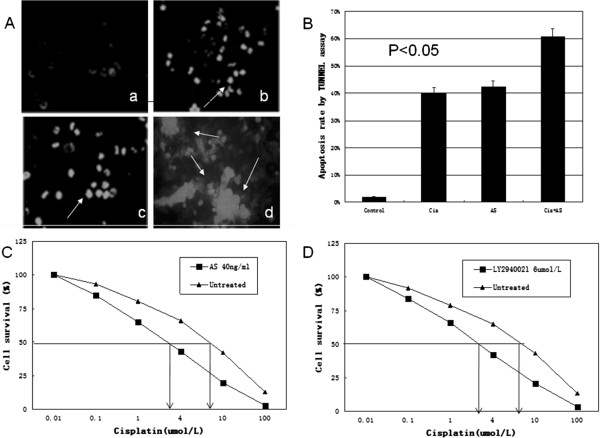Figure 4.

Apoptosis in human ovarian cancer cells was induced by different treatments as revealed by TUNEL assay. (A) Apoptosis was shown in human oravian cancer cells by TUNEL assay. TUNEL-positive nuclei due to DNA fragmentation (white condensed spots) are indicated by arrows. (a) Without treatment as a negative control; (b) Treated with cisplatin (Cis) alone; (c) Treated with antisense IGF-1R mRNA oligonucleotide (AS) alone; (d) Treated with the combination (Cis+AS). (B) There was a significant potentiation in the induction of apoptosis observed in cancer cells treated with both Cis and AS as compared to cells treated with either agent alone (P<0.05). (C) Effect of IGF-IR (AS) on cisplatin treated ovarian cancer cells. Ovarian cancer cells were cultivated in the presence of AS and cisplatin. Arrows, IC50 concentrations of cisplatin for AS (left arrow) and medium control (right arrow). (D) IGF-IR signaling through the PI3K pathway is essential for cisplatin resistance in ovarian cancer cells. Ovarian cancer cells were cultivated in the presence of cisplatin and LY294002, which inhibits PI3K activity. Arrows, IC50 concentrations of cisplatin for LY294002 and medium control.
